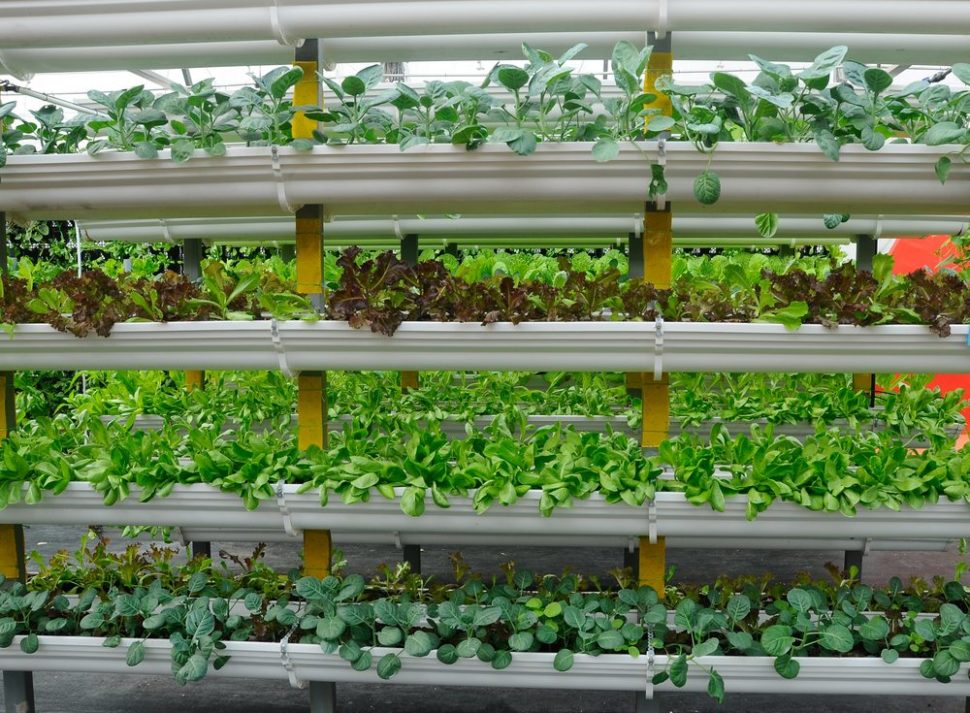Vertical farming methods aren’t revolutionary, but Plenty is.
Agriculture is a fundamental part of the American economy. As no surprise, America’s startup culture gravitated toward this eventually developing agribusiness and agrotech.
What does Plenty mean for the future of farming?
Plenty's Bright Agrotech Future for FarmingClick To TweetWhat’s the Deal with Agrotech, Plenty, & Vertical Farms?
If you aren’t familiar with the concept of vertical farming, don’t worry: it’s pretty much what it sounds like. You plant, cultivate, and farm crops as usual, but in a vertical setting with stacking layers. This can be done in a warehouse for farmers or on the side of a skyscraper for business people to enjoy.
How?
Controlled environment agriculture techniques and tactics seen in greenhouses provide an environment for farming. In fact, Ecologist Dickson Despommier claims that vertical farming could positively impact the environment. Among the other benefits are: shelter from weather, more controlled environments, conservation of resources, reduced water use, and more.
Despite this, investors and others in the industry question the profitability factor of non-conventional farming.
So, what exactly does Plenty bring to the mix?
Whole Foods Quality Without the Price tag
Plenty claims it can deliver Whole Foods quality produce for big box store prices. Considering their output and business model, it’s both possible and probable.
For context: a Plenty vertical farm can grow up to 350 times more than a conventional farm.
A bonus: they do this with only 1% of the water used in conventional farming.
With $200 million USD from investors such as Alphabet, Amazon, and Softbank, Plenty intends to rollout their farms on a global scale.
How global? 500 farms total with 1 farm for every metro area with 1 million or more people. Talk about scaling.
The plants grow along the sides of tall towers with lights place on the inside. In order to cut costs and be more environmentally conscious, Plenty works with physics.
They have vents on the ceiling to release excess heat, lowering the energy use. Excess water drips to the bottom to be recycled. Condensation is collected, filtered, and fed back to the farm.
The lighting utilizes software to best provide the right spectrum and intensity of light for every plant. If one particular section is struggling, the software can adjust in order to rehabilitate any plants in need of special attention.
Using this lean and conscious approach, they plan to erect a five-acre big grow houses close to city centers. This mitigates delivery times and ensures freshness.
But the disrupting vertical farming tech isn’t the only reason this startup is making waves.
Agrotech Acquisitions: Plenty Gets Bright
Bright Agrotech worked with Plenty from the very beginning in 2013. The founder, Nate Storey, was even a part-time Chief Science Officer for the San Francisco startup. Their Zipfarms helped Plenty bring their vision into reality, so the acquisition is a natural fit. It also allows Plenty to scale more easily than it could scale all on its own.
As AgFunderNews reports, Matt Barnard, CEO of Plenty, says: “We have a great portfolio of system-level IP. They have a great portfolio of component level IP”. Plenty will need the help since there are many companies doing exactly what they’re doing. Bowery Farming, Aerofarms, Freight Farms, and BrightFarms are just a few.
It’s Agrotech Farming, but Don’t Call Them Labs
Barnard wants to avoid the term “labs” when it comes to the company’s grow houses. Society still has a stigma surrounding lab-grown food, so the differentiation isn’t unfounded.
Though no recent news has surfaced, the company has stated it would start rolling out farms this fall.
Despite this lack of news, the implications of a mass rollout of vertical farming could be huge for the global economy and population. It’s one of many steps toward a more conscious and collaborative future for all.
Imagine it: grow houses in city centers. Fresh produce available everyday at prices everyone can afford. The downtown skyline fletched with greenery. Putting a dent in the ever-growing issue of global hunger.

















Comments (0)
Most Recent